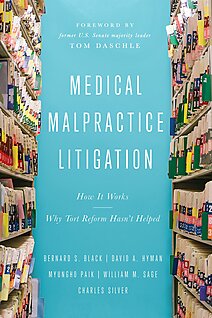For years there has been an ongoing debate about the causes of medical malpractice liability insurance premium spikes and their impact on access to care and defensive medicine. State legislatures responded to premium spikes by enacting damages caps on noneconomic, punitive, or total damages, and Congress has periodically debated the merits of a federal cap on damages in medical malpractice cases.
Yet, there has been a shortage of evidence in support of the narrative that excessive damage awards are responsible for such premium spikes. What did cause those premium spikes? What effect did state-level medical malpractice reform have? Did it reduce frivolous litigation? Did it improve access to health care and/or reduce defensive medicine? Both sides in the debate have strong opinions, but their positions are mostly based on anecdotes.
In a new book, Medical Malpractice Litigation: How It Works, Why Tort Reform Hasn’t Helped, a politically diverse team of researchers provide an accessible, fact-based response to the questions that ordinary Americans and policymakers have about the performance of the medical malpractice litigation system.
Join us to hear coauthor Dr. David A. Hyman, adjunct scholar at the Cato Institute; Dr. Richard Anderson, chairman and CEO of The Doctors Company; and Dr. Bill Frist, a former U.S. senator, hold a lively discussion on the medical malpractice litigation system and the effects of limiting the right of malpractice victims to recover.




